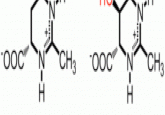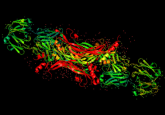Scoring bacterial tumbles and runs

Analyzing bacterial motility is important for understanding the biology of bacteria and has significant clinical implications. Researchers have now developed free software to analyze complex patterns of bacterial swimming.

Methods to study bacterial motility range from soft agar plate assays to the microscopic tracking of bacterial movement. The latter is more precise and quantitative than the former, but is costlier and more complex due to need for high speed optical equipment, large amounts of data storage, and complex computation.
In this month’s issue of BioTechniques, William Bentley and his colleagues at the University of Maryland, College Park, describe TumbleScore, their MATLAB-based and freely available software for the rapid tracking and quantification of bacterial swimming in movies with slow or fast frame-rates obtained from light or fluorescence microscopes. After the paths of the bacteria in the movie have been determined, various software tools can be used to quantify complex motility behavior. In the case of flagellated bacteria, the software provides various metrics for the phenomenon of tumbling, where the smooth path of the bacterium during a run that is propelled by the normal counterclockwise motion of the flagellum is interrupted by a sudden and random change in direction caused by a brief clockwise flagellar motion. Tumblescore also provides “rose” graphs to visualize the path of the analyzed bacteria.





